- Physical exercise
- Before you start
- Exercise and nutrition
- Exercise and health conditions
- Cardio training
- Resistance training
- Pilates
Physical exercise
 |
Physical exercise can be as easy as finding a total of 30 minutes of activity a day. The benefits include a overall healthier body, as well as preventing the development of cancer and other serious diseases. Any form of physical activity can be beneficial, whether it’s walking, cycling, swimming, or jogging. |
For more information, see Preventing Cancer: Physical Exercise.
Video: Exercise and activity
 |
Being active and exercising is very important for health. Dr Joe Kosterich talks about the benefits of being fit, the three main types of exercise, and simple ways to keep to your exercise program. |
Watch a video about exercise and activity.
Exercise myths
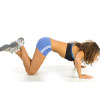 |
Our attitudes toward exercise are derived from a set of health beliefs which define our behaviours. One thing that influences our health beliefs regarding exercise is the myths surrounding the area that are generally believed or unknown. It is important to understand the full and true benefits of exercise in order to extinguish the “barriers” between ourselves and exercise so we can change our health beliefs for the better. |
For more information, see Exercise Myths.
Physical exercise and eye health
 |
The role of exercise in protecting eye health is not well known and there is a lack of evidence outlining the role of physical exercise in protecting against vision loss and other eye diseases. However, available evidence suggests that regular physical activity has a protective effect in relation to a number of eye disorders. |
For more information, see Physical Exercise and Eye Health.
Exercise for brain health
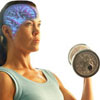 |
Physical activity has repeatedly been shown to influence psychology and neurology. Studies in this area suggest that exercise significantly improves cognition (thinking), decreases stress and anxiety, improves self-esteem and decreases depression. |
For more information, see Exercise for Brain Health.
Maintaining your diet and exercise routine during holidays
 |
It is not unusual to come to your holiday and believe you need a well deserved break not only from work or study but from your usual exercise and diet regime. However, it is important that diet and exercise are not completely forgotten when you go on holidays. During your holidays it is wise to change your exercise goals and treat yourself, within reason. |
For more information, see Maintaining your Diet and Exercise Routine During Holidays.
Before you start
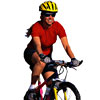 |
Aerobic exercise is a proven way to improve life expectancy and reduce hospital admissions in heart failure patients. Regular exercise strengthens muscles and keeps them flexible, helping you maintain your mobility. It can also help to control weight and improve your sense of well-being. |
For more information, see Advice About Aerobic Exercise.
Preparing for exercise
 |
Whether you are just beginning a healthy exercise regime or you are already at your peak fitness, there are some important steps that we all need to follow before, during and after exercising to protect ourselves from sports related injuries and other physical distress. |
For more information, see Preparing for Exercise.
Exercise stretches
 |
Stretching is an important part of exercise preparation and recovery. A lot of pressure and strain is put on your muscles, tendons and joints during exercise. If these tender spots are not stretched out, your muscles will become knotted. Eventually it may result in a muscle injury that will prevent you from doing more exercise. |
For more information, see Exercise Stretches.
Exercise recovery
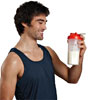 |
To minimise risks and perform optimally the next time you exercise, you must allow your body to recover. Exercise recovery involves a number of post-exercise steps that are essential for any exercise regime, regardless of fitness level, the type of physical activity or the exercise intensity. |
For more information, see Exercise Recovery.
Video: Stretching and exercise recovery
 |
Dr Joe Kosterich talks about the benefits of stretching, how much is needed, and other things to do after exercise. |
Watch a video about stretching and exercise recovery.
Exercise and nutrition
Video: Protein
 |
Everyone hears a lot about fats and carbs, but not so much about protein, the building blocks of the body. Dr Joe Kosterich talks about how much protein we need, sources of protein, protein supplements, the role of protein in exercise programs, and the advantages and disadvantages of high-protein diets. |
Watch a video about protein.
Protein shakes
 |
A protein shake is a high protein beverage, usually prepared by mixing a specially formulated, high-protein powder with liquid. Protein shakes are an excellent source of protein and people usually drink them after exercising (when protein synthesis is occurring most rapidly) to maximise the benefits of exercise. |
For more information, see Protein Shakes.
Exercise and health conditions
Pregnancy and exercise
 |
It is important to stay active during pregnancy to control weight gain, relieve stress and reduce muscle tension. Other exercises can strengthen abdominal and pelvic floor muscles. |
For more information, see Pregnancy and Exercise.
Physical activity with cardiovascular disease
 |
People who take up regular physical activity after an initial cardiac event (such as a heart attack), and who have stable disease symptoms, have a 31% lower risk of experiencing another, fatal cardiac event compared to people who don’t engage in regular physical activity. |
For more information, see Physical Activity with Cardiovascular Disease.
Video: Cardiac exercise
 |
Dr Andrew Maiorana discusses guidelines for exercising for people with cardiovascular disease. |
Watch a video about cardiac exercise.
Arthritis and physical activity
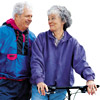 |
For many years, it was suggested that people with arthritis should avoid exercise, as it was thought to further inflame joints. But many scientific studies now suggest that regular physical activity can reduce joint pain and possibly increase mobility, making it easier to perform everyday tasks. |
For more information, see Arthritis and Physical Activity.
Video: Exercise and arthritic pain
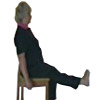 |
One of the easiest and cheapest ways to reduce osteoarthritic pain is through regular exercise. A variety of simple exercises can be done at home. |
Watch a video about exercise and arthritic pain.
Pain and physical activity
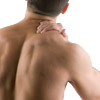 |
Many people with long standing pain become inactive and don’t do much exercise. Unfortunately, low activity levels lead to muscles becoming weak and wasting away, joint stiffness, weight gain and low mood. These factors can all contribute to worsening pain. There are many benefits of regular physical activity in reducing pain. |
For more information, see Pain and Physical Activity.
Cardio training
Video: Cardio training
 |
Cardio training is a form of exercise that makes the heart beat a little faster. This includes walking, running, football and tennis. Dr Joe Kosterich talks about the purpose of cardio training, the importance of exercise, and the need to start small. |
Watch a video about cardio training.
Resistance training
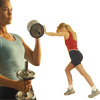 |
Resistance training (RT) is a type of physical activity that involves some form of resistance used against a muscle contraction. There are many types of resistance that can be used, each specific for the type of RT and the goals of the exercise. |
For more information, see Resistance Training.
Video: Resistance training
 |
Resistance training is a form of exercise that involves pushing or pulling against some weight, including weight machines in the gym. Dr Joe Kosterich talks about the importance of resistance training and the fact that you don’t have to bulk up. |
Watch a video about resistance training.
Resistance training exercises
 |
There are a number of common resistance training exercises that are used to work the major muscle groups. Motion during resistance training should be smooth and continuous; joints should not lock; the core muscles must be tightened to protect the spine; and knees must always bend to carry the weight when lifting. |
For more information, see Resistance Training Exercises.
Pilates
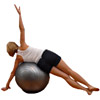 |
Pilates is a unique form of exercise that is designed to condition the entire body through focus on alignment, core strength, breathing and flowing movement. Pilates works on creating stability in the lower back and pelvic region, which allows the body to move with greater efficiency and form. |
For more information, see Pilates.
Pilates for back pain
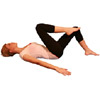 |
Back pain can drastically reduce quality of life. Many people who experience back pain become less involved in work, exercise and social activities. Carefully monitored exercise programs that are designed to allow improvements in mobility, strength and flexibility without worsening back pain are integral to effectively treating back pain. |
For more information, see Pilates for Back Pain.
All content and media on the HealthEngine Blog is created and published online for informational purposes only. It is not intended to be a substitute for professional medical advice and should not be relied on as health or personal advice. Always seek the guidance of your doctor or other qualified health professional with any questions you may have regarding your health or a medical condition. Never disregard the advice of a medical professional, or delay in seeking it because of something you have read on this Website. If you think you may have a medical emergency, call your doctor, go to the nearest hospital emergency department, or call the emergency services immediately.







